The Plague of the Zombies (1966)
Directed by: John Gilling
Written by: Anthony Hinds, Peter Bryan
Starring: André Morell, Brook Williams, Diane Clare, Jacqueline Pearce
UK
AVAILABLE ON BLU-RAY AND DVD
RUNNING TIME: 91 min
REVIEWED BY: Dr Lenera, Official HCF Critic
In a Cornish village in August 1860, the inhabitants of the town are dying from a mysterious plague that seems to be spreading at an accelerated rate. Even the local doctor, Peter Tompson, cannot combat the disease and is hindered by the fact that Squire Clive Hamilton, who lords it over the village, won’t allow the bodies to be touched. Alarmed, Thompson sends for outside help from his friend Sir James Forbes, who is reluctant to go but is talked into it by his daughter Sylvia who is friends with Pete’s wife Alice. The two men disinter the corpses that were recently buried and, to their surprise, find all the coffins empty. At the same time, Sylvia follows Alice, who is seemingly under some spell, to a mine where she sees one of the supposedly dead men walking….
I guess that zombie lovers coming to The Plague Of The Zombies for the first time may find the film strange to watch and even disappointing. The zombies have very little screen time and it often feels more like a vampire movie than a zombie one [in fact the story’s really rather similar to Dracula], while the tale is structured as a mystery where it takes the protagonists an hour to find out what we know right from the offset. Back in 1966 though zombies hadn’t featured much in films since the 1930’s and 1940’s when they were a staple of horror movies from the cheapie American studios like Monogram, the only true classic being the first, White Zombie. Therefore Hammer were treading quite carefully, something which actually paid off because The Plague Of The Zombies is a very fine movie, highly atmospheric in a very cold manner, gradually building up a head of steam expertly and delivering some classic horror moments along the way. The ending’s a bit rushed and some of the plot doesn’t actually make much sense if you think about it, but the latter certainly doesn’t hold back Dracula: Prince Of Darkness [with which this film was often billed – oh what an amazing double bill that would have been to go to!] from being a terrific movie, and this one, which also has a distinct class aspect, is almost as good, if a bit more subtle considering its potentially gruesome subject – it wasn’t until 1968’s Night Of The Living Dead when screen zombies begun to eat people!
Peter Bryans, who’d scripted the quite similar The Hound Of The Baskervilles, wrote a story called The Zombie in 1962, which he and Anthony Hinds turned into a synopsis and then Hinds wrote the script. Universal balked at such a gruesome screenplay, so Hinds toned it down and the film was included in the Seven Arts/Fox/ABPC package after Hinds had removed an opening scene set in Haiti which would have cost too much. It’s surprising that John Gilling was chosen as director as he and Hinds fell out after Hinds rewrote Gilling’s script for The Gorgon, and in return Gilling totally rewrote Hinds’s screenplay for The Plague Of The Zombies while Hinds was on holiday in France. This was the first script that Hammer submitted to the MPAA the American censors, and they required a beheading be far less graphic so the film could get the ‘PG’ rating most Hammer films received in the US. The BBFC were concerned about the script’s coffin exhumations, burning zombies and the beheading, but in the end no footage was actually cut from the film. It was shot back to back with The Reptile using the same Bray Studios sets during an extremely hot August and September, the weather causing much discomfort for the zombie extras. Greater use was made of the exterior of Buckinghamshire’s Oakley Hall than normal, and of course nearby Black Park was utilised yet again. During shooting, André Morell didn’t get on with his co-star Diane Clare because he didn’t feel she was a very good actress. The double bill with the Dracula film did great business and reviewers were surprisingly kind to this one.
Even though the Haiti prologue was never shot, the opening scene behind the credits feels like we could be there with its drumming and dancing black folk. A man in a mask has some tiny coffins containing voodoo dolls on an altar, while we then cut to a girl – Alice – sleeping, who has a bandaged wound in her arm. The masked man pours blood onto one of the dolls, and Alice’s wound starts to bleed and she wakes up screaming. Well it’s certainly a strong beginning and probably necessary as nothing similar occurs for a while. Forbes and his daughter Sylvia arrive in the unnamed village and are not only insulted by some fox hunters but see the arrogant snobs interrupt a funeral procession and knock the coffin over a wall. The theme of the rich mistreating and exploiting the poor appears in a few other Hammers, but never so explicitly as in this one, even the basic plot essentially being about this subject. The villainous Squire Hamilton’s racket is not entirely explained – he’s involved in voodoo and has obviously returned from Haiti with knowledge and even helpers, but he also seems to run a kind of Hellfire Club, some of his men grabbing Sylvia and taking her to his house for what is obviously rape and sadism until Hamilton appears to save her – and this particular Hammer baddie seems okay to her at first.
Sylvia following Alice to the mine is rife with a sense of the ominous despite the obvious ‘day for night’ shooting, and there’s a nice shudder with the shadow of a figure falling across Alice, climaxing with a tremendous shock moment that must have made 1966 audiences, unfamiliar with this breed of the undead, jump out of their skin, as a pasty-faced zombie suddenly appears to hurl a body at her. Roy Ashton’s makeup hasn’t been much imitated except in Italy, but it remains among the best zombie looks. Forbes, Sylvia and the local Dr Tompson gradually uncover the truth, and it’s nice that the heroine makes key connections on her own even if she ends up as a damsel in distress. Gilling stages two classic horror moments which follow immediately on from each other. First, Alice rises from the grave to be beheaded with a shovel, but then we suddenly switch to Forbes alone in the graveyard where several members of the undead come out of the ground in what is revealed to be a dream but which doesn’t initially seem like one despite its slanted angles and green tinting. It’s quite nightmarish, but these days I always have to chuckle a little at this scene though – and the many that copied it – in its reluctance to actually show the zombies climbing out of their coffins. It’s usually just shots of hands and faces coming out of the earth and then cuts to zombies who are already walking – but this scene might be the most influential that Hammer ever filmed. After this the film positively races to its climactic scenes, and there’s a good old set-to in a burning house [we haven’t had one of the latter for a while], though the budget means that, when we finally see lots of the zombies, some extras clearly don’t sport much makeup at all.
In fact Squire Hamilton’s idea of cheap labour seems a bit daft as his workers are so darn slow and there are almost as many men being used to whip them. And I have no idea why he wants to zombie-fy women too unless it’s further hints of Hamilton’s utter depravity, something which is subtly suggested to us elsewhere. Still, the screenplay by Hinds and the uncredited Gilling does make an effort to be intelligent elsewhere and even subverts some of the usual details, such as the locals this time having good reason for denying things and the local constable actually being on the side of the good guys and for once rather useful [Michael Ripper showing he can play a part totally straight when required too]. While there are a few nice visual devices, such as a blurry shot of Hamilton gradually becoming clear representing the point of view of the waking Sylvia, and of course that nightmare scene which really is unusual for its almost experimental quality, overall Gilling and cinematographer Arthur Grant, who’d already lensed a number of films for Hammer but who would photograph nearly every subsequent Hammer film for a few years, choose to make The Plague Of The Zombies a bit more naturalistic in look than normal, and this extends to the Cornish village set which is among Hammer’s most convincing.
I remember wishing that Peter Cushing and Christopher Lee had made the parts of Forbes and Hamilton respectively when I first saw this film 20 or so years ago [they never used to show this one on TV as often as many of the others when I was young], but now I can’t imagine anybody other than the actors we actually have in the roles. Andre Morell is such a charming, if sometimes brusque, hero and John Carson a rare Hammer villain who can seem genuinely pleasant at times. Carson is nice and subtle and helps make this one a little bit unique. Sadly Diane Clare as Sylvia, despite her experience, is rather weak and unconvincing throughout. Jacqueline Pierce is underused but her unusual qualities would be well employed in Hammer’s next film. And finally James Bernard contributes another edgy score. It might actually be one of Bernard’s simplest efforts since the 1950’s, but those dissonant notes and jagged note patterns still work wonders and some extra percussion is well employed in places suggesting Haiti. Maybe it’s perhaps a bit tranquil for some today, but The Plague Of The Zombies is another Hammer triumph and possibly one of their most sheerly fun movies. It has more than enough qualities to make me wish that Hammer had made more zombie films than just this and 1974’s The Legend Of The 7 Golden Vampires. Maybe the zombie subgenre would have evolved in a different way if they had – which would have been both good and bad I suppose.
Rating: 










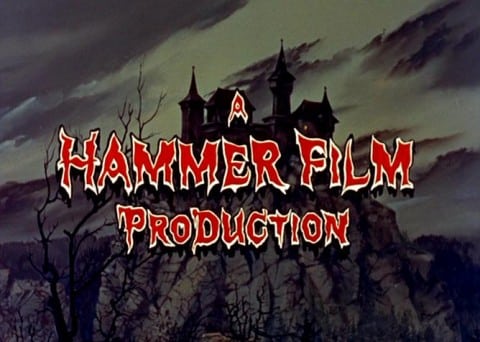
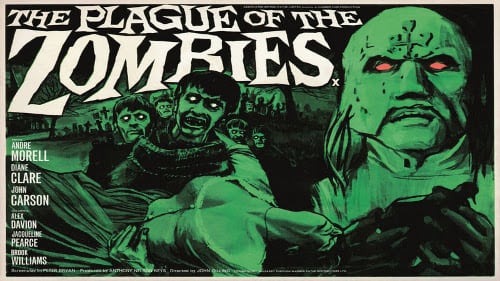
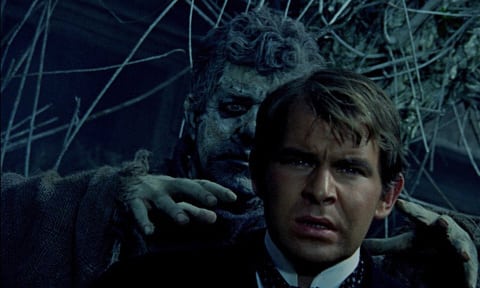
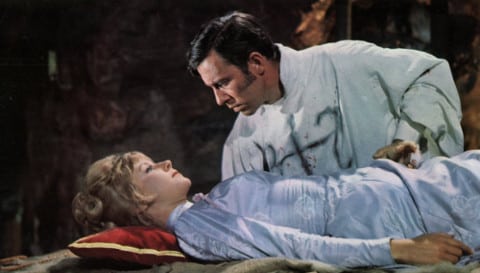

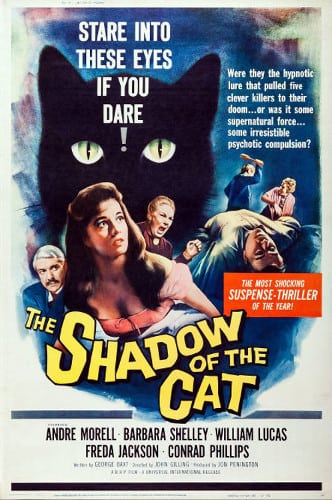
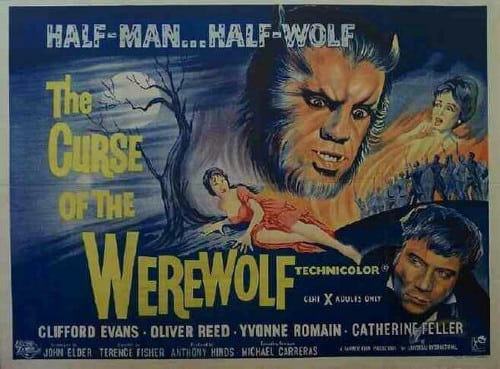
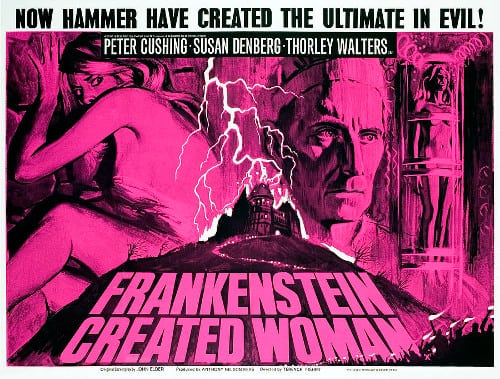
Be the first to comment